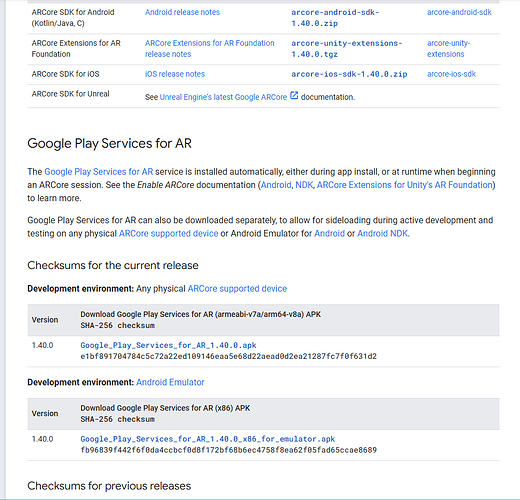Hello!
I’m very new to React Native (and JS in general), so I apologize in advance
I’m trying to launch a simple XR(AR) session on my Samsung Galaxy S21 phone.
I have react native and the babylon dependencies installed/
EDIT: A few notes about how I differed from the instruction to install babylon react native.
The Instructions for a fresh project recommend using React native 0.69, but that won’t work properly on my m1 mac, so I used react 71.
But this required me to use @babylonjs/react-native-iosandroid-0-71 - npm (not 64) and my installation command became
pm i @babylonjs/react-native@1.6.4-preview @babylonjs/react-native-iosandroid-0-71 @babylonjs/core @babylonjs/loaders react-native-permissions --legacy-peer-deps. This was needed because 1.6.4 oreview was updated to work with loaders package according to this answer
The scene the code I took from the sample renders fine even with a few small changes
but when I press the Start XR button, nothing happens. I added some debugging logs inside
and only the first one test message 1 is printed.
I think await xr.baseExperience.enterXRAsync is not returning, am I invoking it correctly?
This is my code
import React, {
FunctionComponent,
useEffect,
useCallback,
useState,
} from 'react';
import {SafeAreaView, View, Button, ViewProps, StatusBar} from 'react-native';
import {EngineView, useEngine} from '@babylonjs/react-native';
import {SceneLoader} from '@babylonjs/core/Loading/sceneLoader';
import {Camera} from '@babylonjs/core/Cameras/camera';
import {ArcRotateCamera} from '@babylonjs/core/Cameras/arcRotateCamera';
import '@babylonjs/loaders/glTF';
import {Scene} from '@babylonjs/core/scene';
import {WebXRSessionManager, WebXRTrackingState} from '@babylonjs/core/XR';
import {LogBox} from 'react-native';
const EngineScreen: FunctionComponent<ViewProps> = (props: ViewProps) => {
const engine = useEngine();
const [camera, setCamera] = useState<Camera>();
const [xrSession, setXrSession] = useState<WebXRSessionManager>();
const [trackingState, setTrackingState] = useState<WebXRTrackingState>();
const [scene, setScene] = useState<Scene>();
const onToggleXr = useCallback(() => {
(async () => {
try {
if (xrSession) {
await xrSession.exitXRAsync();
} else if (scene) {
const xr = await scene.createDefaultXRExperienceAsync({
disableDefaultUI: true,
disableTeleportation: true,
});
console.log("test message 1");
const session = await xr.baseExperience.enterXRAsync(
'immersive-ar',
'unbounded',
xr.renderTarget,
);
console.log("test message 2");
setXrSession(session);
console.log("test message 3");
}
} catch (error) {
console.error("Failed to toggle XR", error);
}
})();
}, [scene, xrSession]);
useEffect(() => {
if (engine) {
const url =
'https://raw.githubusercontent.com/KhronosGroup/glTF-Sample-Models/master/2.0/DamagedHelmet/glTF/DamagedHelmet.gltf';
SceneLoader.LoadAsync(url, undefined, engine).then(loadScene => {
setScene(loadScene);
loadScene.createDefaultCameraOrLight(true, undefined, true);
(loadScene.activeCamera as ArcRotateCamera).alpha += Math.PI;
(loadScene.activeCamera as ArcRotateCamera).radius = 10;
setCamera(loadScene.activeCamera!);
});
}
}, [engine]);
return (
<>
<View style={props.style}>
<Button
title={xrSession ? 'Stop XR' : 'Start XR'}
onPress={onToggleXr}
/>
<View style={{flex: 1}}>
<EngineView camera={camera} displayFrameRate={true} />
</View>
</View>
</>
);
};
const App = () => {
return (
<>
<StatusBar barStyle="dark-content" />
<SafeAreaView style={{flex: 1, backgroundColor: 'white'}}>
<EngineScreen style={{flex: 1}} />
</SafeAreaView>
</>
);
};
export default App;
If launching for the first time, if i minimize the app and go back in I get
LOG test message 1
LOG [Error: ARCore not installed.]
LOG ARCore not installed.
ERROR Failed to toggle XR [Error: ARCore not installed.]
